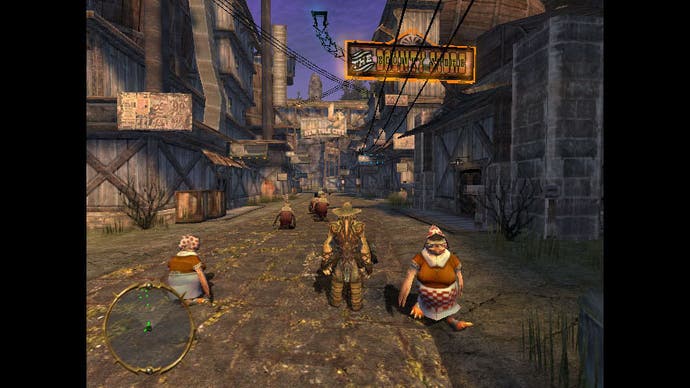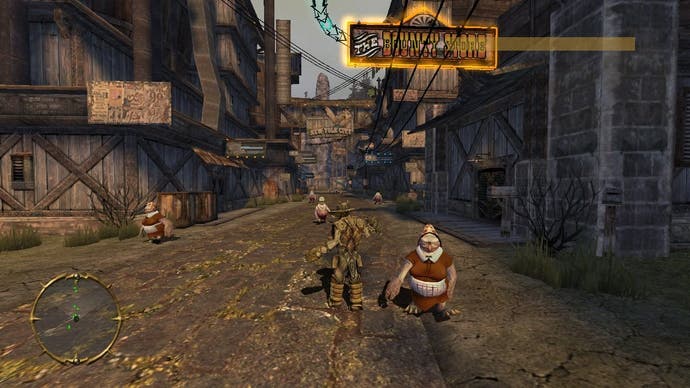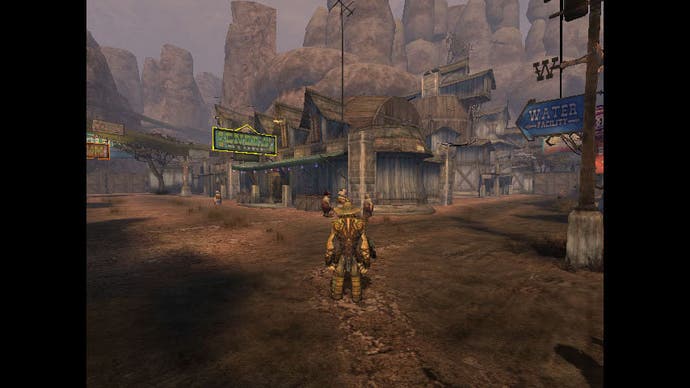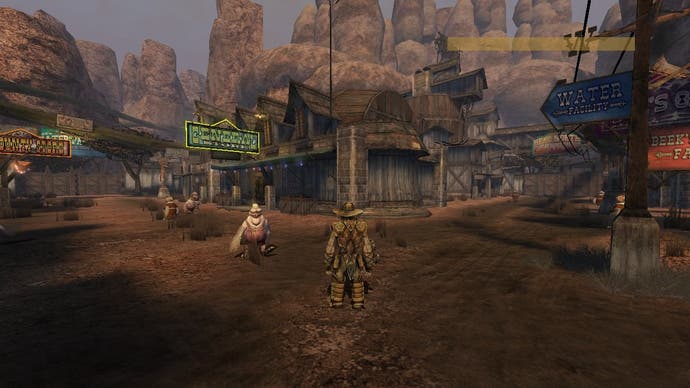Digital Foundry vs. HD Remasters
Splinter Cell and Stranger's Wrath feature in DF's look at the trend for bringing back classics.
While the visual upgrades in Stranger's Wrath HD make a big difference, in common with most - if not all of the HD remasters released to date - the core game code is basically a port. It's the easiest way to ensure that the original gameplay transfers across exactly, but even here there's plenty of scope for optimisation.
"We are effectively running the original game, but with massive optimisations and some elements being re-written completely," confirms Gilray.
"An example is the particles. The original particle system used 46 per cent of the PS3 PPU, after doing some clever stuff it's now taking two to four per cent. There were a few areas like this that we changed. There's also a system in the game for 'decorators' - these being foliage or other painted meshes. The original literally drew each one, one at a time. We've changed this so that they're all batched up and rendered in almost a single pass, vastly reducing the number of separate draws."




While porting will work for game logic, rendering engines back in the day were quite different to what we have now and different tricks were used to get the most out of the older architecture. Perhaps this explains why the first two Splinter Cell games perform so poorly in certain situations (especially in 1080p and 3D modes). For Stranger's Wrath, Oddworld used the Xbox-specific version of DirectX 8 that required some retooling when it came to JAW's initial PC conversion, with an OpenGL "wrapper" of sorts being used. PSGL is a direct PlayStation equivalent of that, meaning that the PS3 remaster of the game is branched off from the existing PC conversion.
"We took our OpenGL version from the PC and went with that, it didn't take that long to get the game running on the PS3, our biggest headache was the data, getting it in the right format, after all PC is Little Endian, where PS3 is Big Endian," Stewart Gilray says.
"So we had to do swizzles on every read, but as the game had a lot more than one read/write system we had to go into the engine and do stuff there in there... so doing all that probably took the longest out of all of it. Beyond that it was optimising mainly and for the most part it was just repetitive task rather than a 'oh my god we can't do this!' type of thing."
An advantage of branching off the codebase like this is that once JAW's enhancements to the game are complete, they can be rolled back into the existing PC conversion of the game in the form of a free title update. Going forward it will be fascinating to see how JAW chooses to handle the other two games in the Oddworld trilogy which were 2D in nature - and how that enormous Perforce repository will be able to improve those games.
While no official release date is forthcoming for Oddworld: Stranger's Wrath HD, chances are it will appear some time in Q4 where we can expect to see a range of new HD remasters. God of War conversion masters Bluepoint Games are set to hand in their HD versions of Ico and Shadow of the Colossus (which we hope to be looking at imminently) plus Resident Evil 4 and Dreamcast classic Code Veronica will be back too.
It's unlikely that we'll see quite the same level of "remastering" that Stranger's Wrath is receiving in many of these releases, but in the case of Bluepoint's work, our HD emulation videos suggest that the all-important core assets will work very nicely in HD, and the studio has a proven track record in tidying up standard def graphical elements that don't look so good in high definition.
Taking centre-stage in November will be the 10-year anniversary edition of Halo: Combat Evolved. A glossy, high-budget production with completely new artwork and a brand new engine that is unique in that it allows players to switch between "classic" visuals and brand new graphics at the touch of a button. It's almost certainly the most expensive HD remake produced to date, and it's difficult to imagine any other remaster justifying a new game-sized budget, but Microsoft is almost certainly expecting another multi-million selling hit.
However, it's Just Add Water's approach that is perhaps the most exciting, ticking off all the boxes of what we would want from an HD re-release: a genuinely classic gameplay experience that still has something special to offer in the present day, close involvement and sign-off from the visionaries behind the original release. Plus, of course, some actual, bona fide remastering.








